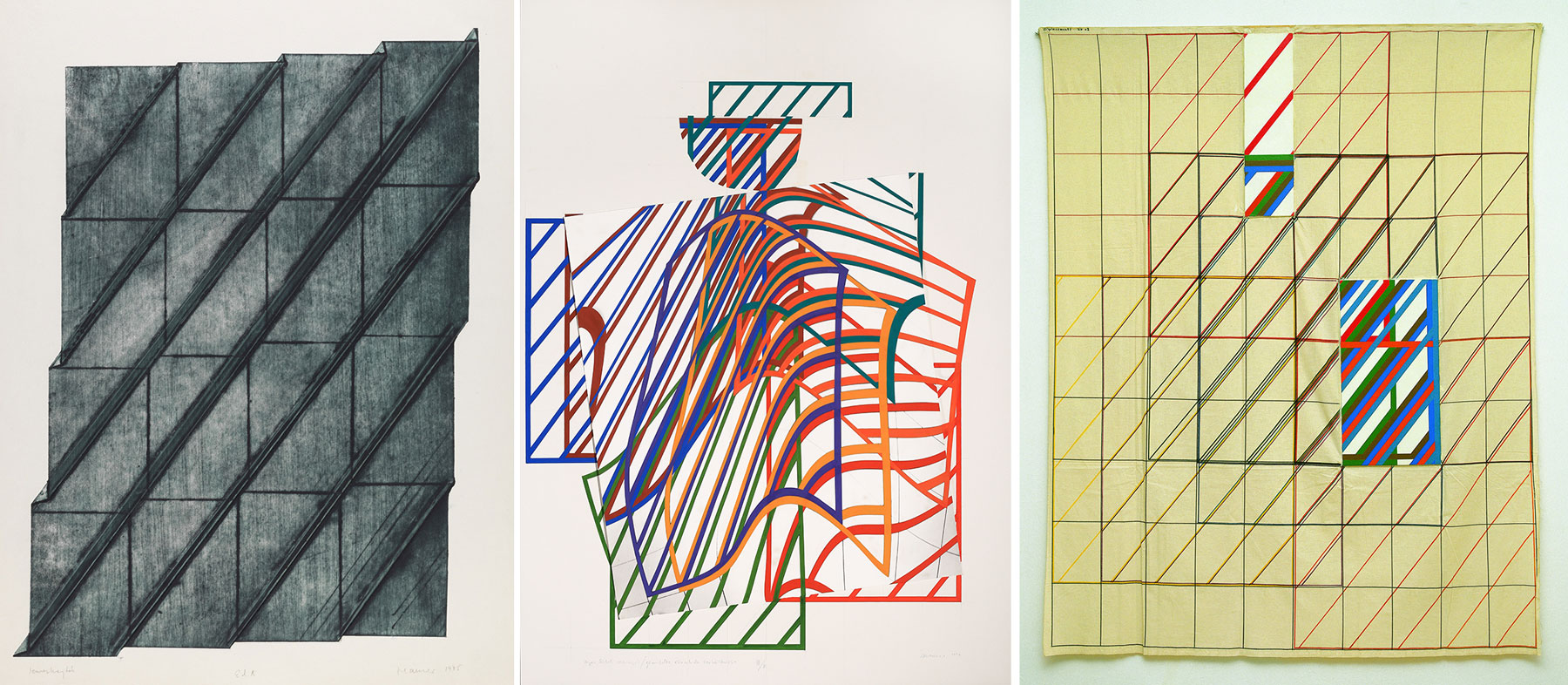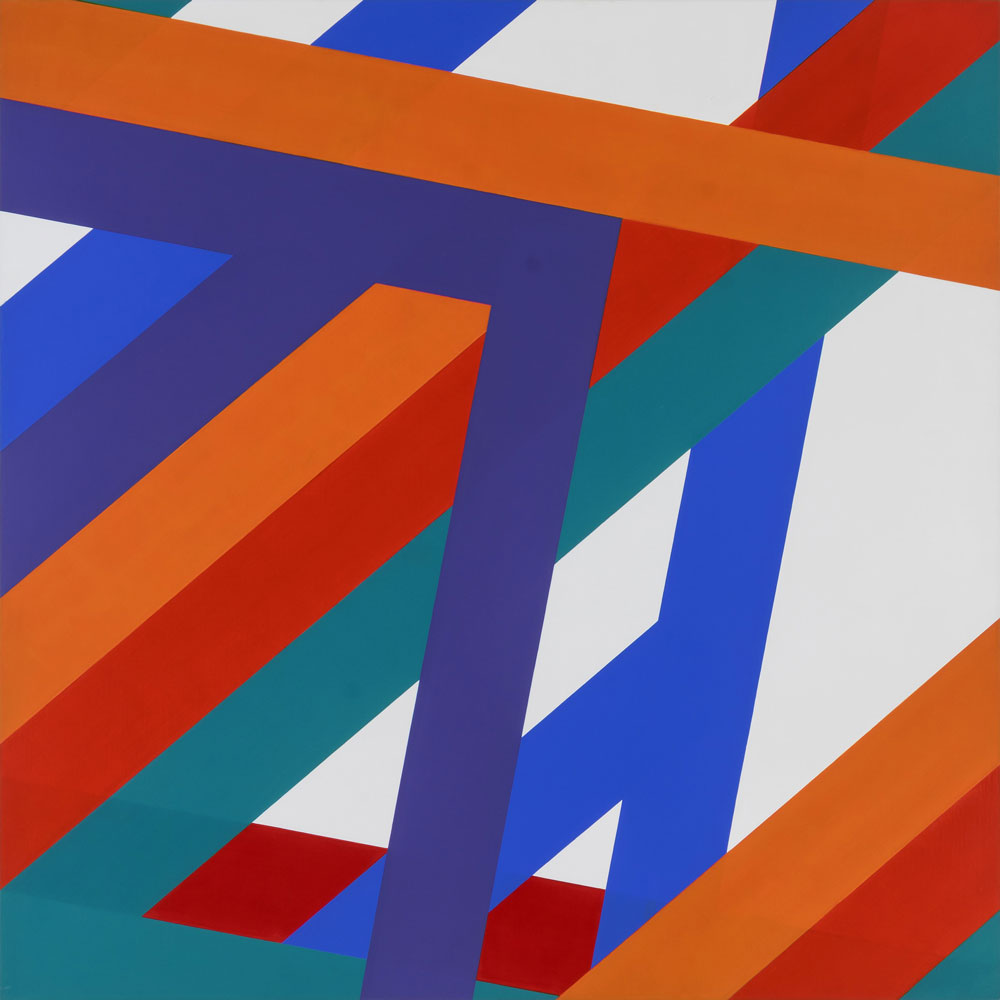ART CITIES:London-Dóra Maurer
 Dóra Maurer emerged as part of a generation of Neo-Avant-Garde Hungarian artists in the 1960s, pursuing highly experimental work in parallel to the ‘official’ art system of the socialist regime. As an artist, teacher and curator she developed an international network across Europe and became a hugely influential figure for younger artists.
Dóra Maurer emerged as part of a generation of Neo-Avant-Garde Hungarian artists in the 1960s, pursuing highly experimental work in parallel to the ‘official’ art system of the socialist regime. As an artist, teacher and curator she developed an international network across Europe and became a hugely influential figure for younger artists.
By Efi Michalarou
Photo: Tate Archive
The first UK survey to celebrate Dóra Maurer’s 50-year-career, bringing together 35 works from her conceptual photographic series and experimental films to her colourful graphic works and striking geometric paintings. It opens alongside a selection of new fdisplays across Tate Modern, including Sol LeWitt, David Goldblatt and Franciszka and Stefan Themerson. Trained as a graphic artist and printmaker in the 1950s, Maurer quickly began pushing the medium to its limits in her early works. The innovative “Seven Foldings” (1975) for example, involved folding an aluminium printing plate seven times before taking an impression. She then moved towards conceptual photographic series and experimental filmmaking, often exploring abstract sequences and the analysis of everyday gestures. The exhibition showcase five of these films from the 1970s and 80s, including “Triolets” (1981) and “Timing” (1973/1980) which feature the repetition of activities, movements and rotations that have become characteristic of Maurer’s practice. As her work became more geometric and abstract, Maurer explored system-based painting and the way in which geometric forms are affected by color and perception. In 1983, a commission for a site-specific project at Schloss Buchberg, near Vienna, gave her the opportunity to expand her painting into three-dimensional space, marking an important shift in her work. Alongside documentation of this commission and several dynamic paintings from the 1980s and 90s, the exhibition culminates in a room of Maurer’s recent works, most of which have never been shown in the UK. These large-scale paintings are characterised by bold color and geometric forms, including “Stage II” (2016) a six-metrer-long work in which brightly colored shapes create a sense of rhythmic three-dimensional movement through space. Maurer until the late 1960s she has worked mainly in printmaking. Later on, her work started to incorporate other visual media, such as film, photography, collage, and found natural materials, such as twigs. She has gained a lot of recognition due to her self-portrait “Seven Turns” (1975) This portrait shows the corner of the artist’s face behind a white card and continues with her holding the previous portrait in the series rotated 45 degrees. This creates a hypnotizing spiral of hands and eyes which resembles what we see through a kaleidoscope or perhaps Indian mandalas. This exciting play of revealing, concealing, shifting and manipulating represents the very core of Maurer’s aesthetics. During the early 1970s, Maurer created a large series named “Reversible & Changeable Phases of Movement”. This series portrays simple actions broken down into sequences of movements. For example, “Etude 4” (1972) represents the catching of a ball reduced to five separate scenes. Later on, it the 80s, Maurer’s work has developed and became much more complex. “Handmade Fractal Paintings” series from 1988 is composed of lines of 3mm width rendered in eight different colors and arranged to create an overlapping series of squares. The series explores the geometrical transformations produced by the enlargement of these squares. More recently, in the 2000s, Maurer has initiated another morphological project called Overlapping, which focuses on the colors and their potential to influence the human perception. The latest Maurer’s work, similarly to her pieces from the 70s, concentrates on uniting the obvious and the conceptual and suggests that art can be quite complex conceptually even if it explores simple phenomena.
Info Curators Juliet Bingha and Carly Whitefield, Tate Modern, Bankside, London, Duration: 5/8/19-5/7/20, Days & Hours: Mon-Thu & Sun 10:00-18:00, Fri-Sat 10;00-22:00, www.tate.org





